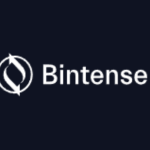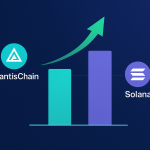NFT & Blockchain
Steep Decline In NFT Sales: A Comprehensive Analysis

Introduction
The NFT market experienced a significant downturn in January 2024, marking the steepest weekly plunge in sales and double-digit losses across five major blockchains. This article delves into the factors contributing to this decline, the impact on the broader market, and potential future trends.
Market Overview
In January 2024, the NFT market faced unprecedented challenges. According to Bitcoin.com News, major blockchains, including Ethereum, Solana, and Cardano, registered double-digit losses in NFT sales . This decline is attributed to several key factors, including market saturation, regulatory pressures, and shifting investor sentiments.
Factors Contributing To The Decline
Market Saturation
One of the primary reasons for the sharp decline in NFT sales is market saturation. The rapid proliferation of NFT projects over the past year has led to an oversupply, making it difficult for new and existing projects to maintain their value. Investors and collectors are becoming more discerning, leading to a decrease in demand for lower-quality and less unique NFTs.
Regulatory Pressures
Regulatory scrutiny has also intensified, impacting the NFT market. Governments and financial authorities worldwide are increasingly focusing on the crypto space, including NFTs, to curb potential fraud and ensure consumer protection. These regulatory actions have created uncertainty, causing investors to pull back and reassess their positions in the market.
Shifting Investor Sentiments
Investor sentiment plays a crucial role in the performance of any market. In the case of NFTs, the initial hype and speculative fervor have waned. Many early adopters who entered the market during its peak are now cashing out, leading to a significant sell-off. This shift in sentiment has been exacerbated by high-profile failures and scams, which have eroded trust in the market.
Impact On Major Blockchains
The decline in NFT sales has had a profound impact on several major blockchains that host these digital assets.
Ethereum
Ethereum, the largest blockchain for NFTs, saw a substantial decrease in transaction volumes. Despite its dominance, the high gas fees and scalability issues continue to plague the network, driving users to explore alternative platforms.
Solana
Solana, known for its low transaction costs and high throughput, also faced challenges. The blockchain’s rapid growth had attracted numerous NFT projects, but the recent downturn has highlighted vulnerabilities in its ecosystem, leading to a reassessment of its long-term viability.
Cardano
Cardano, which has been positioning itself as a major player in the NFT space, experienced a similar decline. The blockchain’s focus on sustainability and security is commendable, but it has yet to achieve the same level of adoption and liquidity as its competitors.
Future Outlook
Market Correction
The current downturn can be seen as a market correction, a necessary phase for the maturation of the NFT market. While painful in the short term, it is likely to weed out low-quality projects and pave the way for more sustainable growth. Investors can expect a more stable and mature market to emerge, with projects that offer genuine value and utility.
Technological Advancements
Technological advancements, such as improvements in blockchain scalability and interoperability, will play a crucial role in the market’s recovery. Efforts to reduce transaction costs and enhance user experience are expected to attract more participants and drive the next wave of innovation in the NFT space.
Regulatory Clarity
Clear and consistent regulatory frameworks will be essential for the long-term health of the NFT market. As governments and financial authorities establish guidelines, it will provide a more secure environment for investors and creators, fostering trust and encouraging broader adoption.
Conclusion
The steep decline in NFT sales in January 2024 marks a pivotal moment for the market. While the downturn has been challenging, it presents an opportunity for the market to recalibrate and focus on sustainable growth. By addressing issues related to market saturation, regulatory pressures, and investor sentiment, the NFT space can emerge stronger and more resilient.
As the market evolves, it will be essential for stakeholders to remain adaptable and forward-thinking. Embracing technological advancements and working towards regulatory clarity will be key to unlocking the full potential of NFTs and ensuring their place in the future digital economy.










